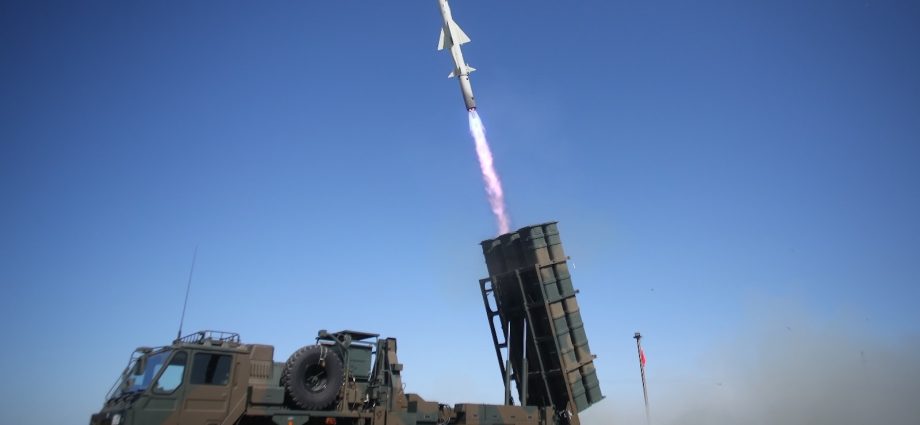The Japanese Ministry of Defense plans to introduce a framework for raising profit margins on equipment procurement contracts to competitive levels in order to provide an incentive for private companies to remain committed to supplying the Self-Defense Forces (SDF). In view of the tense international situation, Defense Minister Yasukazu Hamada calls it an urgent matter.
As reported by the Jiji Press news agency, the ministry will approve profit margins of up to 10% based on performance criteria including quality and on-time delivery, plus an additional 5% to cover anticipated increases in materials and other costs. Under the existing system, which is based on conservative and inflexible cost estimates, industry sources say the average profit margin on defense contracts is only about 2%.
On January 23, Prime Minister Fumio Kishida announced that he intends to strengthen the foundation of Japan’s defense industry. On January 25, Hamada met with representatives of leading defense contractors, who reportedly requested that measures be taken to ensure adequate profitability. Hamada also explained the new approach to the Budget Committee of the House of Representatives.
Many companies have withdrawn from Japan’s defense industry in recent years because of low profitability. Construction-machinery maker Komatsu stopped making armored vehicles in 2019. Specialized component manufacturer Daicel stopped making pilot ejection systems in 2020. Sumitomo Heavy Industries stopped making machine-guns in 2021.
Others, such as Shimadzu, are under pressure from activist shareholders to do the same. Shimadzu makes cockpit display and air-management systems for the SDF, but its aircraft equipment division accounts for only about 5% of its total sales and has been hovering around break-even for years despite efforts to rationalize operations.
Last November, Shimadzu president Yasunori Yamamoto told investors and the media that the division’s small scale, poor growth prospects and high research and development (R&D) expenses made it impossible to expect profits. New capital spending has been postponed, and while Yamamoto says Shimadzu will not make an irresponsible exit, he is looking to transfer the business to another company.
The prospect of decent margins should make defense businesses easier to sell (or to keep) and, in fact, consolidation of the industry is already under way. In 2021, Mitsui E&S (Engineering & Shipbuilding) transferred its unprofitable naval-ships business to Mitsubishi Heavy Industries (MHI). The combined operations should be more efficient, more profitable and better able to serve the Ministry of Defense.
Also in 2021, Yokogawa Electric transferred its unprofitable cockpit instrument display business to Oki Electric.
MHI is Japan’s largest defense contractor, followed by Kawasaki Heavy Industries (MHI), Mitsubishi Electric and other leading heavy industrial and electronics companies. There are dozens more, most of them small. In part, this is a legacy of the scattered and low-profile industry rebuilt after the nation’s defeat in 1945.
MHI is the only one with a broad product portfolio: It makes fighter jets, missiles, battleships, submarines, tanks and artillery. KHI makes aircraft, missiles and submarines. IHI (Ishikawa-Harima Heavy Industries) makes aircraft engines and rocket systems. Japan Steel Works makes tanks and artillery. Subaru, the auto company, also makes helicopters. Daikin, the well-known air-conditioner company, makes ammunition.
Mitsubishi Electric and NEC make electronic and telecommunications systems, radar and satellites. Fujitsu supplies telecommunications, computer systems and data analytics. Toshiba makes electronic systems, radar and missiles.
Most of the larger Japanese defense contractors are profitable, but they generally lag their American counterparts. For the fiscal year ending March 2023, MHI is forecasting an operating margin of 6.1% for its aircraft, defense and space division, while KHI is forecasting 2.9% for its aerospace systems division.
IHI is forecasting 11.6% for its aero engine, space and defense division, but only about 15% of its revenues are from defense contracts compared with 70% for MHI and almost 60% for KHI.
NEC expects its public infrastructure division to generate an operating margin of 10.3% this fiscal year, while Toshiba is forecasting a 4.0% margin for its public infrastructure division.
These figures compare with operating margins of 8.1% at Raytheon, 10.9% at Lockheed Martin and 11.6% at Northrup Grumman in 2022.
There have been some contract-padding scandals in Japan, but nothing like the huge cost overruns and outrageous prices that sometimes make headlines in the US. On the contrary, the most alarming development in Japan has been bids so low they would be good for a laugh if they didn’t reveal an irrational competitive environment that undermines defense-industry cash flow.
In January 2021, it was reported that Mitsubishi Electric had won a contract for research on monitoring Chinese and North Korean missiles via satellite with a bid of 22 yen (17 US cents at the current exchange rate). Two months later, it was announced that the company had won a contract for research into air defense tactics with a bid of 77 yen (59 cents). That’s right – less than a dollar per contract.
The estimated costs of these research projects were not announced, but according to the Japanese press, they were in the millions of yen, or tens of thousands of US dollars. Obviously, Mitsubishi Electric was more interested in blocking its competitor(s) than in making a profit. With an attitude like this, it is not surprising that its defense and space systems division is in the red.
Asked about the unusually low bids by an opposition Diet member, a senior official of the Ministry of Defense answered that if the government’s specifications are met, any bid is allowed. This suggests that the ministry was at the time more interested in saving money than building a healthy supply chain. That seems to have changed.
Follow this writer on Twitter @ScottFo83517667.

